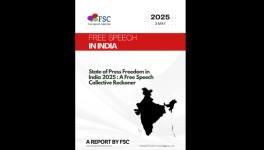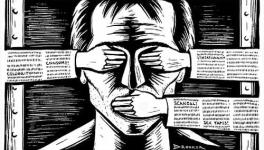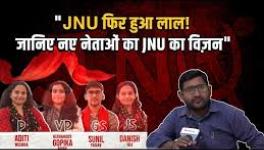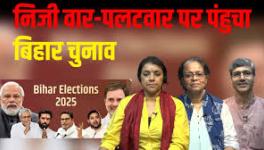Cutting back: How the Central Board of Film Certification’s Censorship Panders Majoritarian Sensibilities
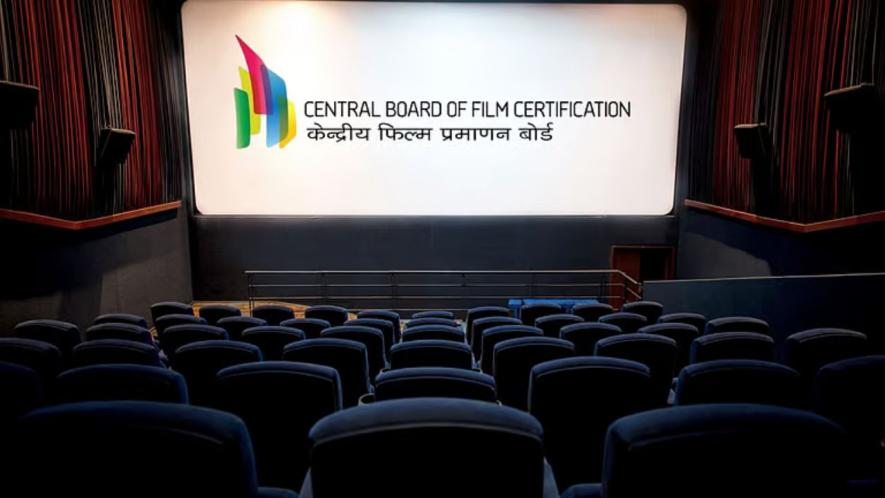
Malayalam Film Empuraan hit the theaters this week following twenty four cuts removing 128 seconds of footage which allegedly depicted scenes similar to the Gujarat riots of 2002. The cuts came as a voluntary move by the creators following widespread outrage from right wing leaders.
In another event, Santosh, an internationally acclaimed movie directed by Sandhya Suri a British Indian director, which follows the story of murder of a dalit women, has been blocked from theatrical release in India after it failed to comply with the cuts proposed by the Central Board of Film Certification (‘CBFC’). The two events in a single time frame point towards a bigger problem of how certification of movies has become a task of appeasing majoritarian ideology rather than genuinely evaluating the content on merits. This event is just another sore display of the fact that the cultural space in India now can accord freedom of speech only when it pleases ruling ideology. This article will delve into the various aspects of censorship in Indian cinema and freedom of expression.
The role of CBFC
CBFC is a statutory body under India’s Ministry of Information and Broadcasting. It regulates the public exhibition of films according to the Cinematograph Act, 1952 and is a certification outfit under the legislation. Its job is to certify the films into categories as per Section 5(A) of the 1952 Act. It is to inform the audience regarding the maturity of the content they are going to consume. It can suggest cuts or modifications to a film, and if the filmmakers comply, they get their certificate.
The certification process follows the 1952 Act, the Cinematograph (Certification) Rules, 2024, and the guidelines issued by the central government under Section 5(B) which says no film gets certified if it is against India’s sovereignty, security, public order, decency, or risks inciting offenses, defamation, or contempt of court or is likely to incite the commission of any offence.
In 1983, the body, previously known as the Central Board of Film Censors was renamed to its present name and the word “censor” was dropped. However, even after undergoing the change people largely believe that it still acts as a censor board. The CBFC can refuse certification if a film—or parts of it—clashes with Section 5B of the Act. Refusal isn’t a "ban" in the legal sense but without a certificate, a film cannot hit theaters or television legally. So, it is a de facto ban in practice.
Take Santosh for instance. The CBFC denied certification in March 2025 unless major cuts were made, effectively stalling its theatrical release unless the filmmakers cave or win a court fight. The line blurs because refusal often feels like censorship, not just classification.
The CBFC does not have to justify its calls in detail which is why we often only get to hear about vague notes like "public order" or "morality" - the reasoning is always shrouded. This opacity shields the decisions, making it tough to call out the bias. Indian viewers have devoured gritty stuff before—Haider (2014) tackled Kashmir’s unrest, Article 15 (2019) dug into caste, and both did fine.
The lack of clear guidelines on application of censorship results in arbitrary decisions often citing reasons like ‘hurting the sentiments of a community’, content sensitivity, public morality, national security, etc. The CBFC’s decisions often reflect subjective interpretations of morality, politics, or public order. Moreover the process of selection remains absolutely opaque. Earlier, the Film Certification Appellate Tribunal (‘FCAT’) acted as a safeguard against arbitrary or overreaching censorship, ensuring due process. However the removal of FCAT through Tribunal Reforms Act, 2021, and the transfer of appellate jurisdiction to the courts have just added another layer of lengthy, slow and unfortunate step towards approval making the process even more tedious.
The shift from censorship to certification is a democratic imperative, ensuring accountability, freedom of expression, and the protection of diverse voices against state or ideological overreach.
The question of fundamental rights
Article 19(2) balances the freedom of expression on reasonable grounds of public order, decency, and morality, but these rules are often applied loosely and unevenly.
The essence of Article 19(2) was to carve out exceptions to free expression, not to make censorship the rule. As the Bombay High Court observed in Phantom Films Pvt. Ltd. v. The Central Board Of Certification (2016) (the Udta Punjab case),
“Our standards must be so framed that we are not reduced to a level where the protection of the least capable and the most depraved amongst us determines what the morally healthy cannot view or read. The standards that we set for our censors must make a substantial allowance in favour of freedom thus leaving a vast area for creative art to interpret life and society with some of its foibles along with what is good”
However, the broad and vague nature of these exceptions becomes a solid justification for silencing anything that aligns with the view of ruling ideology. The restriction ends up swallowing the right. This isn’t just a legal failure—it is a cultural and political failure. Films that provoke thought or expose inconvenient realities, like Santosh, are stifled, while propaganda pieces that toe the line thrive. The Supreme Court in S. Rangarajan v. P. Jagjivan Ram (1989) noted that the State has to protect free speech, not just kneecap it over hypothetical public backlash.
In Bobby Art International v. Om Pal Singh Hoon (1996), objections were raised against a rape scene in the movie Bandit Queen where the Supreme Court clarified how "decency" and "morality" should be judged. CBFC guidelines from the central government urge those in charge to stay tuned to social changes and respect community standards. The undefined community standards are frequently leveraged by authorities, groups, and institutions, prioritising ideological control over free expression. Such an atmosphere of fear has forced many artists to engage in self-censorship, rolling back the achievements of constitutional ethos.
Where politics meets cinema
A troubling feature of film censorship in India is the growing sway of political groups in determining what content is allowed or barred from screens. Art does not ignite riots—people’s reactions do. According to a 2017 Freemuse, study 91 percent of recorded artistic violations in India were linked to government authorities (55 percent) or non-state actors (36 percent) enforcing ideological viewpoints.
Films with a clear slant, jingoistic blockbusters—often get the nod, red carpet roll outs, state endorsement, and tax free treatment. Such double standards denote how political interventions keep a tight grip on what is being said.
Censorship in India is deeply intertwined with politics, religion, and societal pressures. It is not merely a legal tool but a powerful mechanism that various entities use to control narratives, suppress dissent, and shape public opinion. Governments, political parties, religious groups, and corporate interests often dictate what can and cannot be expressed in the public domain, leading to an erosion of artistic freedom and free speech.
The predictable yet brutally effective method of labelling any critique as an “attack on faith,” incites mob hysteria, and demands bans or edits. This tactic is not about protecting religion—it is about asserting political dominance. The precedents set rules and purports the practice of self-censorship born from fear. Such polarised political groups or parties do not need to win a court case since their noise alone nudges filmmakers to back off like it happened in the case of Empuraan. This trend limits what stories can be told, potentially reducing the diversity of Indian cinema. It can protect films from boycotts but at the cost of creative freedom, leaving audiences with less critical or bold content. If every filmmaker starts trimming edges just to dodge bans or boycotts, the range of what gets said shrinks.
The critical use of art provides a broad space for anyone wishing to express their opinions. As art can take any form, it is a powerful medium that can convey bitter stories and set strong narratives. It is dangerous for those who are afraid of criticism as well as those who are criticising. That is why a film like Santosh which even after such celebration beyond India was effectively banned in India for critiquing India’s glaring socio-political problems that questions power groups. Making the fateful cuts in Empuraan does nothing to alter the facts except that it places in the popular memory what is being actively erased and replaced with another set of narratives.
Apoorva Verma is a fourth year student pursuing BA.LLB from Gujarat National Law University
Courtesy: The Leaflet
Get the latest reports & analysis with people's perspective on Protests, movements & deep analytical videos, discussions of the current affairs in your Telegram app. Subscribe to NewsClick's Telegram channel & get Real-Time updates on stories, as they get published on our website.















